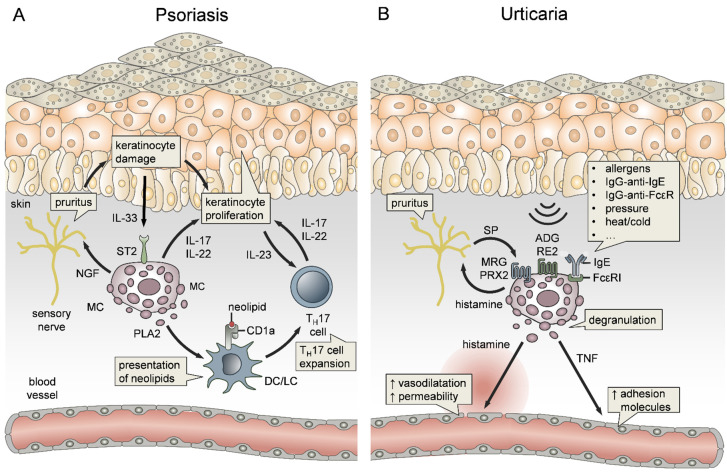Figure 4.
The role of mast cells (MCs) in psoriasis and urticaria. (A) MCs directly contribute to psoriatic plaque formation via the release of the keratinocyte (KC) proliferation-inducing cytokines IL-17 and IL-22. Indirectly, MCs promote TH17 cell expansion via the production of phospholipase A2 (PLA2), which is taken up by dendritic cells (DC) and Langerhans cells (LC), leading to the presentation of neolipids through CD1a. Additionally, MCs promote pruritus through the release of nerve growth factor (NGF) that causes KC damage. Consequently, IL-33 production by KCs activates MCs through the ST2 receptor, thus ending in a self-perpetuating cycle. (B) In urticaria, MC activation and degranulation can be induced by numerous stimuli, including autoimmune and mechanical triggers. While histamine promotes vasodilation and vascular permeability, MC-derived TNF induces the expression of endothelial cell adhesion molecules. Moreover, tryptase and histamine are activating neurons, leading to itching and release of neuropeptides, such as substance P (SP). SP, in turn, activates MCs in an IgE-independent manner via the Mas-related G-protein coupled receptor X2 (MRGPRX2). Another IgE-independent mechanism of MC activation is through the mechanical sensing receptor ADGRE2.

